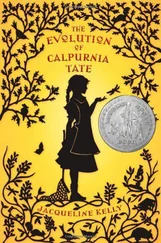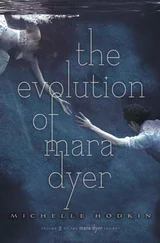She would rest but would not sleep, because the headaches were so horrific that they would not lend her a moment of peace long enough to let her fall asleep. Sometimes she got lucky, and those nearly monthly brain-blitzes failed, for whatever mysterious reason, to happen — but usually she could tell her period was coming because those headaches served as the grim harbingers of looming uterine discharge, warning her a day or two in advance. Then the headaches worsened at the peak of her three days’ bloodletting and left in their wake another three days of insomnia. I think the insomnia may have had something to do with all the Excedrin Lydia took during the time of the headaches. Extra-Strength Excedrin Migraine tablets were the only painkillers stalwart enough to even begin to quell the tempests that raged nightly in her skull, and perhaps she overmedicated herself, took too much of it, and it kept her awake, and she stayed awake, became moody, easily given to tears, emotionally haywire, would spend her nights alert and tormented, with her brain, I know, playing and replaying every regret and mistake in her life, every flare-up of fury or subjection to humiliation, until her heart rattled against her ribs like a broken machine and the light in the room shifted from orange to blue-gray and the streets outside became reanimated with the — to her — threatening and depressing sounds of early morning traffic and tweeting birds, which meant she would now be forced to face the coming day in this state, knowing that the closest she had managed to come to sleep was a sort of rollicking seasickness accompanied by a lurid zoetrope of nauseating images sliding across the screen of her inner eyelids, more like hallucinations than dreams.
And then, after the headaches and the menstruation, followed by the insomnia, the only way to reregulate her circadian rhythm was to take these heavy-duty sleeping pills, for which she had a special prescription. And when she took one of those pills she would sleep like a corpse and could not have been woken even if the house was on fire. After a few nights of this, she was finally back on her biological track and she would be fine for another few weeks, until the headaches reemerged and the whole cycle began anew.
Meanwhile, I was making great progress with my art. I would spend the whole weekend in my studio painting on paper with watercolors or on canvas with acrylics. Now, instead of watching TV, I would frequently retire to my studio directly after we got home from the lab in the afternoon, where I would immerse myself in my art until Lydia would fetch me, to ask me to clean up for dinner. She even successfully convinced Norm that I was making such fantastic headway with my painting that it would be beneficial to my mind and soul to cut our sessions at the lab down to a half day only, in order to reserve the afternoons for me to paint. Perhaps Norm’s quick acceptance of this idea arose more out of his exhaustions and frustrations with trying to work with me at the lab; I was, I admit, ever increasingly bitchy and uncooperative with him in the lab setting. He was glad to have the newfound peace and quiet in the afternoons. So I was seeing less and less of the Norm/lab world, and spending more and more time at home with Lydia. We all won in that way.
After some initial frustrations with the difficulty of acrylics on canvas in comparison to markers on paper (paint is not like ink; it’s much subtler, requires one to think more in terms of color and tone than in line and form) I fell in love with the new medium and continued to expand my artistic vocabulary. I painted a series of works modeled after my mobile of the solar system, seen from various angles and lighting. First I painted individual portraits of each of the nine planets and the sun, then I painted them all together.
All this time I was still learning a lot from Lydia. I was learning constantly — we’re still talking about my first explosive phase of awakening to the world. It wasn’t happening in big events — not some cataclysmic defining moment, not like the big bang that vomited up all the matter that composes those nine planets and you and me — but rather a very gradual formation of the universe inside my consciousness, more like the slow process of gravity rolling all that scattered dust into balls and setting them in motion, making planets, making stars — not big things, but billions of little things occurring over periods of months and years, pinching and molding my mind and soul into ontogenesis.
I was, and am, fascinated by the human figure. The bottomless catalog of emotive capacities the human form and face is capable of. That’s why I’ve always been bored with still-life pictures. “Still life”?—my God, the very phrase is an oxymoron! Give me life ! Hence, imitating my hero, Van Gogh, I painted thousands of self-portraits, and of course I continued to paint and paint and paint Lydia, who gamely continued to suffer to sit for my portraits. And when she took me for visits to the laboratory at the university, I would dash off sketches of the other scientists, which I would later use as studies for paintings.
In seemingly no time at all I had become a painter of considerable technical accomplishment. By the time Lydia organized a formal exhibition of my work in a gallery space in the University of Chicago library, I had essentially settled into what would be my medium of choice for a long time to come: oil on canvas. Oils! — after you’ve worked with oils you’ll never want to dally in acrylics again. Acrylics — they’re too thin, too meek, the colors aren’t as vibrant, they don’t feel as real and viscous and, dare I say it, as human as oils. And I had started to work with big canvases, also. Most of the paintings included in that first exhibition of my work were painted on four-by-six-foot canvases. Lydia continued to generously purchase all my materials for me.
I would like to describe for you in detail my first gallery exhibition. But before I do, I need to tell you something else, something very important. It has to do, naturally, with Lydia. I apologize for the brevity of this chapter, Gwen — but it is of paramount importance to me that we devote an entire and separate chapter to what I am about to tell you.
You have got to understand that I had been living with Lydia, and in fact had been platonically sharing a bed — a bed! — with her for over a year (in my admittedly hazy recollection) before anything “happened.”
The sexual tension had been there right from the beginning, though. I think it had colored our relationship since the day we met — when I first fell in love with her — when I watched her take a bite out of that peach, when I tapped on that box, demonstrating to the scientists that I, too, could be just as irrational as any human being. My desire for her had gone through different phases. It had evolved and adapted to its environment through many marvelous mutations. Up until this point Lydia had taught me nearly everything I knew — everything she knew — because love — and I mean the real thing, Eros , romantic, sexual love —is possible only between psychological equals. And she raised me up until I was practically her intellectual equal. We had come to a point in our relationship — a point at which there was but negligible difference between our respective levels of reasoning ability (though technically I suppose at this point I could still barely speak a coherent word other than yes, no , and my own name, and furthermore only Lydia could understand my speech), when we had ceased to be simply an educator and her pupil — or even a surrogate mother and her child — and became two true friends, who each learned from the other every day. We were partners in this project of ours, united against the stern world. I filled a vacancy in her emotional life, and she gave me my life as I know it, in the form of culture and knowledge.
Читать дальше












